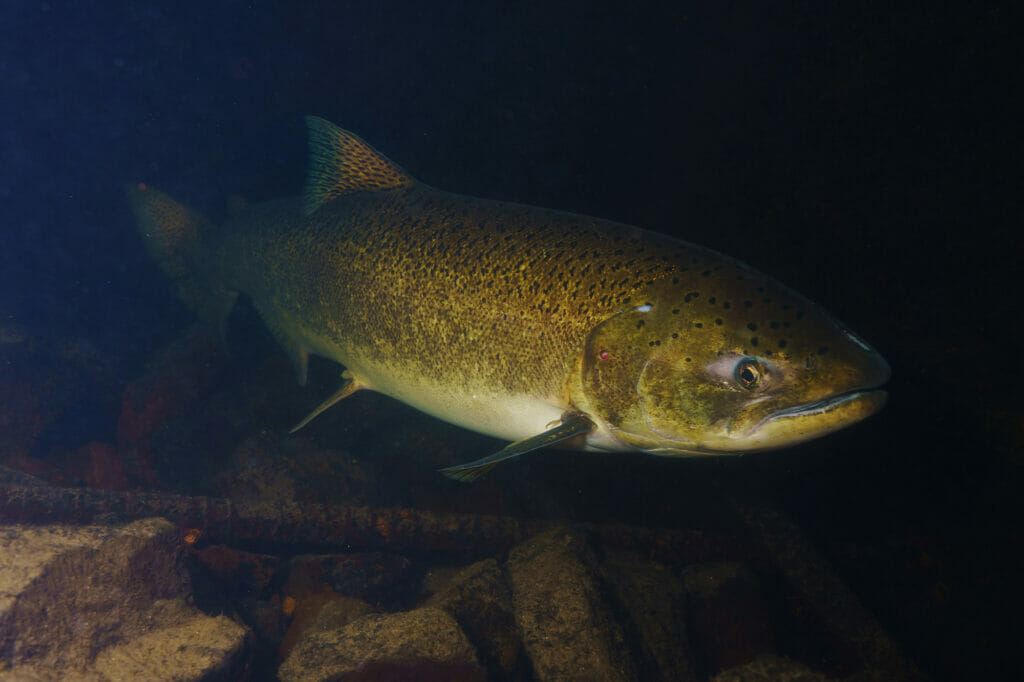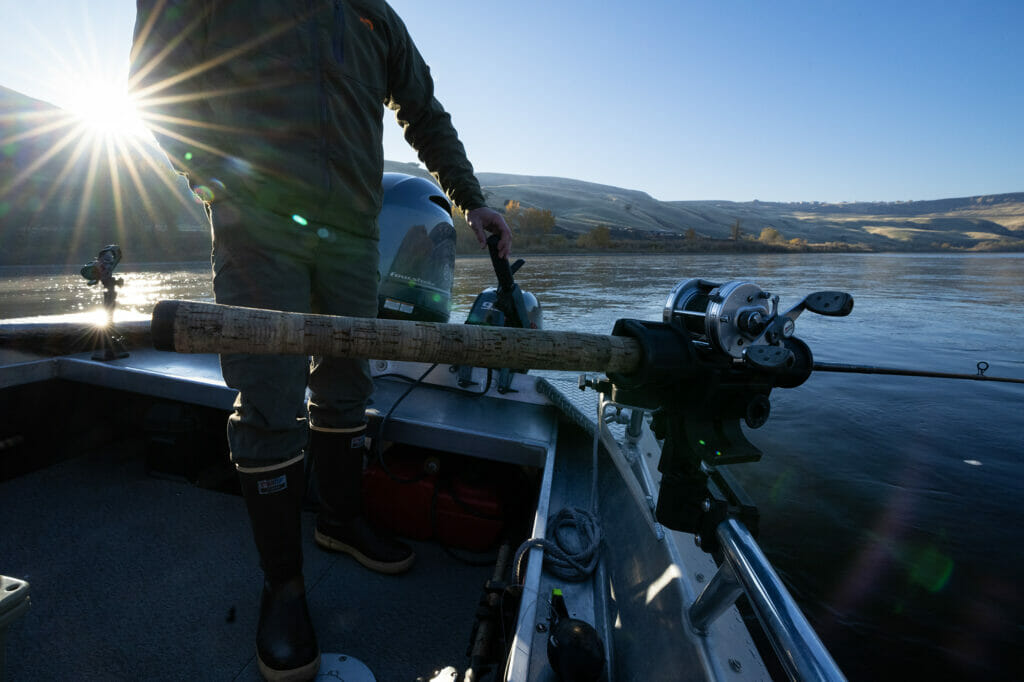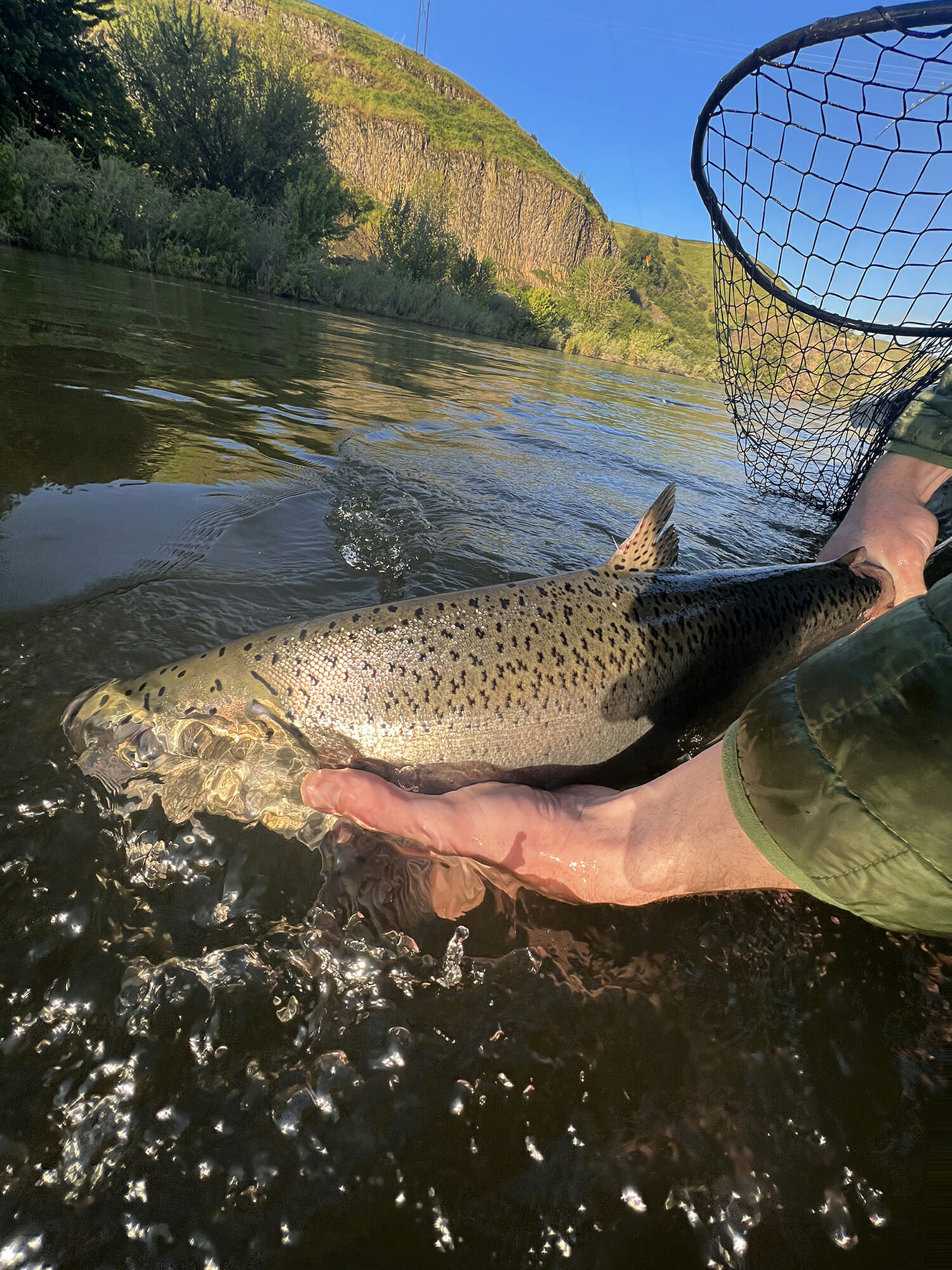Now is our chance to let the Biden Administration know it is time to act.
As the spring Chinook salmon migration nears its end in much of the Snake River basin, it is time to reflect on what was and was not. In February, fisheries managers forecasted 85,900 spring Chinook salmon would return to the Snake River basin with just 13,200 of them from wild origin. To date, collectively, just 38,954 adult spring Chinook salmon have been counted over Lower Granite Dam: very different from the preseason forecast. While these run numbers are disappointing no matter how you look at it, if we add in the amount of effort and money spent to recover these runs, it is downright depressing.

How we got here: it’s simple, Snake River dams cause salmon declines
Since the completion of the lower Snake River hydro system in 1975, wild spring/summer chinook numbers have consistently declined year-after-year from historical populations despite our best efforts. Since that year, the average return has been 13,400. This, despite billions of dollars invested to mitigate the detrimental impacts of the hydro-system to the largest and coldest freshwater habitat found in the lower 48.
While wild Chinook numbers labor to reach the National Oceanic and Atmospheric Administration (NOAA) minimum abundance threshold of 33,500, we are even further than before from meeting our collaborative commitment developed through the Columbia Basin Partnership to a healthy and harvestable target of 138,000 Chinook returning each year.
In 2021, the Nez Perce Tribe determined that 42 percent of independent Snake River spring/summer Chinook populations are at the quasi-extinction threshold. This threshold identifies populations with fewer than 50 wild adult spawners returning to any one population as a warning sign for future recovery because of genetic viability and absolute extinction. At the same time, the Nez Perce Tribe predicted 77 percent of populations will drop below the threshold by 2025.

Spring Chinook runs–hatchery salmon or bust.
Are you wondering why there are still open fisheries for spring Chinook salmon? We will clarify; approximately 80 percent of spring Chinook salmon returning to the Snake River Basin are hatchery-origin fish, hence harvest still being allowed.
Annually, approximately 13.6 million spring/summer Chinook salmon smolt are released into the basin. The program is mandated by Congress as a commitment of the Water Resources Development Act of 1976 and the Northwest Power Act of 1980 to mitigate for the impacts of the dams: the largest band-aid in history that fell off the festering wound of the lower Snake River dams long ago as highlighted by the continued poor returns. Although Snake River spring Chinook salmon are listed as threatened under the Endangered Species Act, harvest is allowed on hatchery-origin Chinook only, which can be identified by the lack of adipose fin. Despite the best intentions, hatchery salmon return at a lower SAR (smolt to adult return) than wild fish. It is similar to turning a fan on at the front door of a bank and blowing all the money out on the street.
Diminished runs have a far-reaching ripple effect throughout the region, from violation of Tribal Treaty and trust obligations to a devastating loss of an iconic species, not to mention a loss of river community-dependent economic inputs. It’s not just the salmon, our region is in trouble.
Today we have an opportunity to provide the Biden Administration our perspective on recovery and how we can return wild salmon to the basin. Tell the Biden Administration that now is the time to remove the lower four Snake River dams. Take action now.



